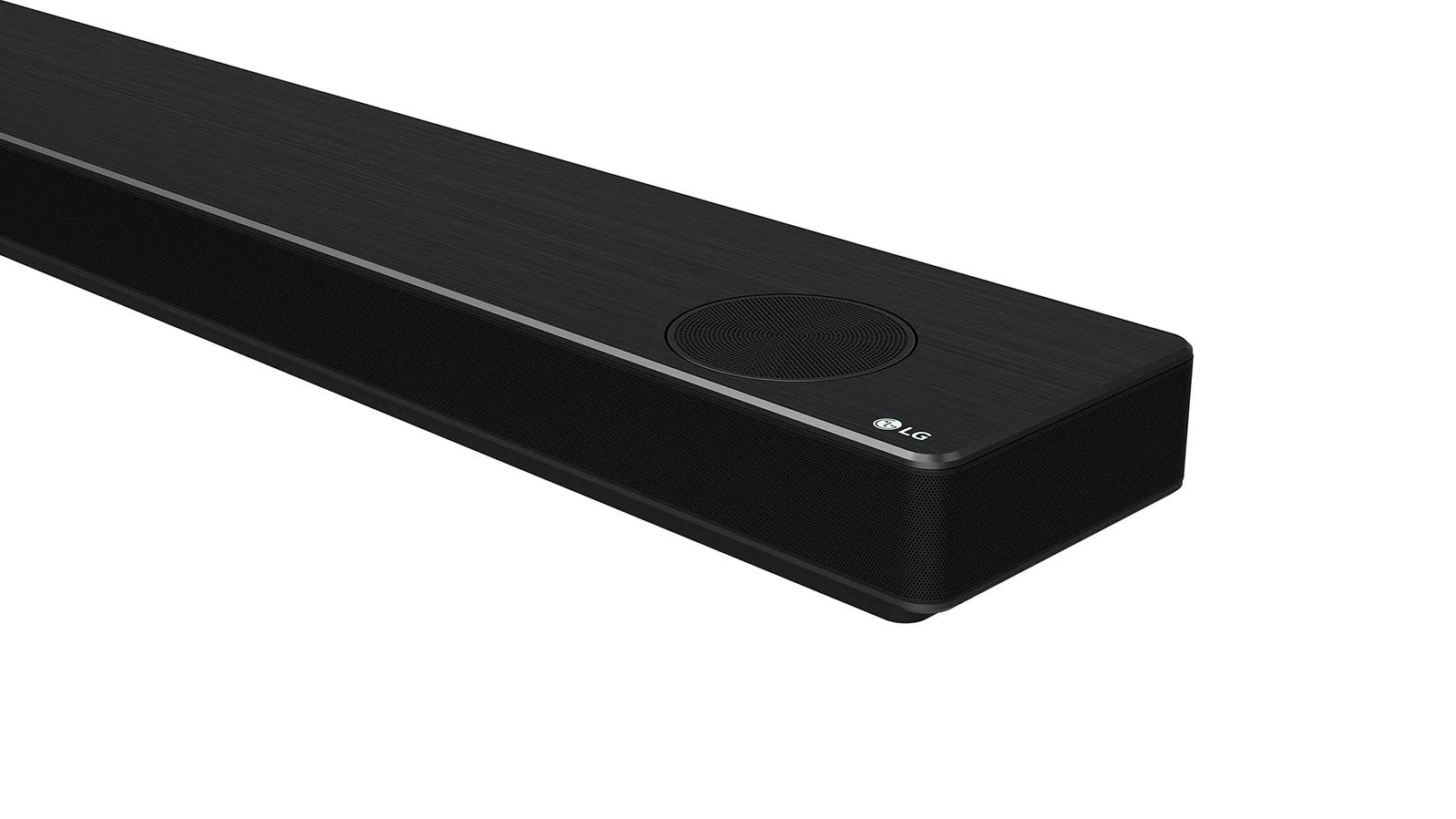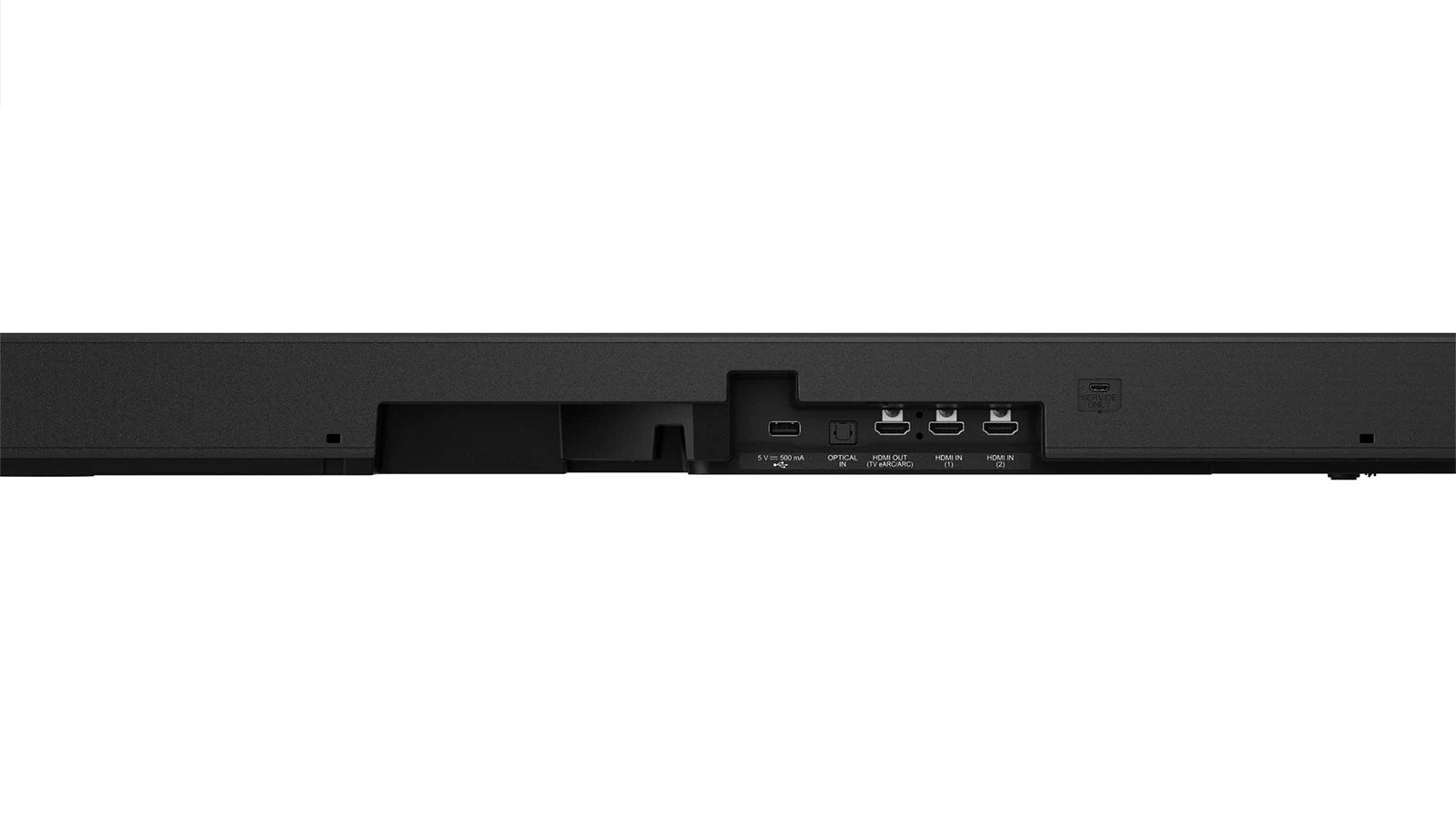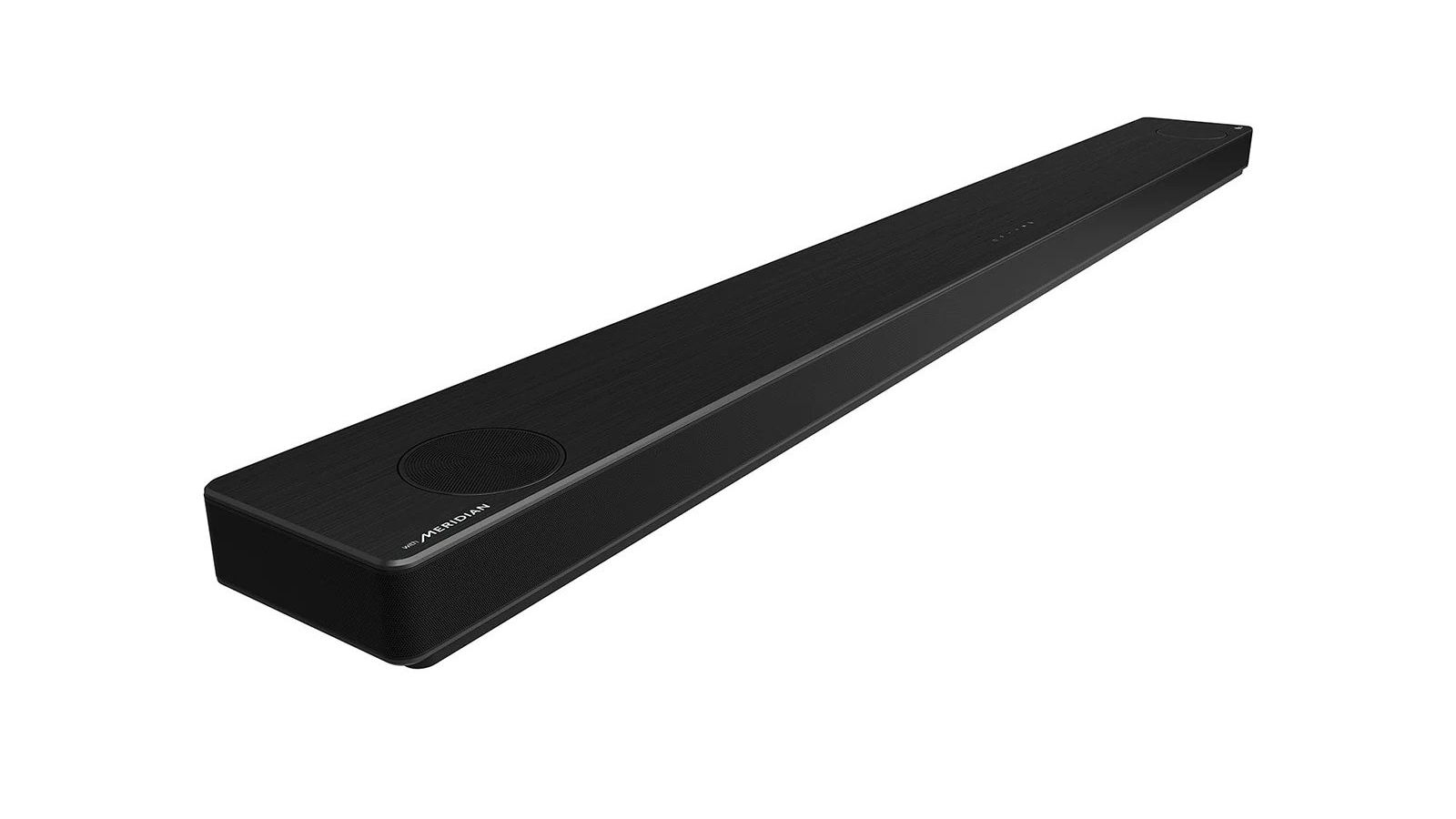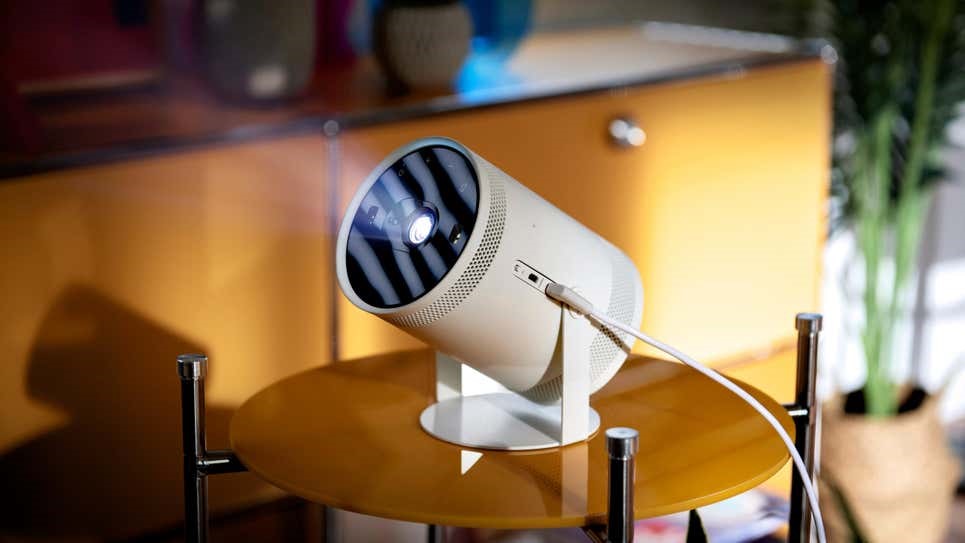What Hi-Fi? Verdict
It isn’t perfect, but the SP11RA is a refined, detailed and room-filling Dolby Atmos system
Pros
- +
Large, well-spread soundscape
- +
Comprehensive feature set
- +
Detailed top end
Cons
- -
Looks don’t match the price tag
- -
Sub feels one dimensional
- -
Lacks a little punch
Why you can trust What Hi-Fi?
It seems that LG can do no wrong when it comes to OLED TVs, but its soundbars have proven to be more of a mixed bag. The company is clearly determined to get things right with its 2021 flagship model, the LG SP11RA, despite the two-star bruising we gave its predecessor.
Like the previous model, the SP11RA is a serious investment in terms of both money and space. If your idea of a soundbar is affordable, compact convenience, you may be surprised by the price, size and number of boxes involved here. It’s still a more convenient and less overwhelming undertaking than building a true home cinema system, though, particularly one to match the LG’s 7.1.4 channels of Dolby Atmos action.
Best of all, while the SP11RA looks similar to its underwhelming forebear, the feature set and sound quality have been significantly improved. It’s still not perfect and it won’t be for everyone, but for some, it could be just what they’re looking for.
Pricing
The SP11RA launches at £1500 (AU$1849) and supersedes 2020’s SN11RG, which was initially similarly priced but has been heavily discounted since being discontinued.
Its nearest rival is Samsung’s 11.1.4ch package, the Q950A, which currently costs £1600 ($1600, AU$1500), while some of Samsung’s smaller 2021 Dolby Atmos soundbars with wireless subs, such as the Q800A £799 ($700), can be upgraded to surround packages through the addition of the SWA-9500S 2.0.2 wireless rear speaker kit, which costs £249 ($248, AU$395).
Alternatively, the Award-winning, Dolby Atmos-enabled Sonos Arc, which costs £799 ($799, AU$1399) on its own, can be expanded through the addition of two One SL speakers (£358, $358, AU$538) and, if required, a Sub (£699, $699, AU$999). This full system would set you back £1856 ($1856, $2936).
If all this sounds quite costly, bear in mind that the cheapest AVR we recommend that does 7.1.4 amplification, the Denon AVC-X6700H, costs £2299 ($2499, AU$6190) and you'd also need to budget for a full speaker package.
Build

Size is certainly the most conspicuous physical feature of the SP11RA. At 144cm long, LG suggests pairing with TVs sized 55 inches and above, so you’ll need a substantial cabinet to house it on. Hardware for wall mounting is included but, at 15cm deep, it will protrude noticeably more than your flat screen.

Connections eARC, 2x HDMI, optical, USB
ARC/eARC eARC
Sound format support Dolby Atmos/ Dolby AudioTM/ DTS:X/ DTS-HD/ PCM
Bluetooth version 5.0
AirPlay 2 Yes
Chromecast Yes
Voice control Google Assistant, Alexa
Dimensions (hwd) 6.3 x 144 x 14.6cm (bar); 39 x 22 x 31cm (sub); 21 x 13 x 19cm (rears)
Weight 7.2kg (bar); 7.8kg (sub); 5.2kg (rears)
The finish seems to have been designed to help camouflage the large surface area and almost succeeds. The front and side faces are wrapped in a tight black mesh grille while the top surface is finished in brushed black metal which, despite its matt finish, reflects a bit of light from the screen directly above.
Size aside, there's little in the design that indicates the premium price. The styling is rather nondescript, and the individual units don’t feel particularly solid or premium either.
Hidden inside the main bar are the left, centre and right channels, each with a 20mm silk dome tweeter and a 10cm racetrack driver; two ‘surround’ channels with a 10cm racetrack driver unit at either end of the bar; and on the top surface are a pair of 7cm Atmos speakers.
Also on the top exterior is a mic for room calibration and voice control (the SP11RA is compatible with both Alexa and Google Assistant) as well as touch buttons for power, input, volume, play/pause and quick source select options for wi-fi and Bluetooth 5.0.
The front face has a five-character swift scrolling LED display for text feedback as you change settings and otherwise constantly shows the current active input.
At the rear is an HDMI-out port that supports eARC, plus two HDMI 2.1 inputs with 4K Dolby Vision pass-through. There’s also an optical input and a USB port, the latter for connection to a mass storage device.
Relative to the main bar the separate wireless sub (SPP8-W) seems modestly sized, with a front-facing 18cm bass driver and rear port, wrapped on three sides in a soft black fabric.
The two wireless rear speakers house front-facing 76mm units for the surround back left and right channels and angled 63mm drivers on top for the Atmos, with the sides finished in the same brushed black metal as the main bar. While the sub and surrounds are ‘wireless’ in terms of audio signal they still require power and need to be located near a plug socket.
That’s a total of 15 drive units configured for 7.1.4-channels, but syncing this array of boxes is pretty straightforward. The LG Soundbar app quickly finds the main bar and is easy to add onto our network, with the other units of our sample automatically joining after. There's also a button on the back of each unit for manual pairing and an LED status indicator.
Features

The SP11RA has a comprehensive list of connectivity options that can be easily accessed via the touch buttons, the minimalist remote control or the app. For streaming, alongside Bluetooth and wi-fi, there’s Chromecast built-in and, if you have access to hi-res content, you’ll be pleased to know the soundbar can handle audio of up to 24-bit/192kHz quality.
The levels of each speaker group can be turned up or down using the remote or the app, and there’s a broad two-band EQ to tweak the high end or low end of the front of the main unit.
As well as a decent ‘Standard’ sound mode, there are a host of other sound profiles, some of which are new for this year, including a ‘Music’ mode that benefits from tuning courtesy of Meridian, with whom LG has collaborated to enhance its audio products since 2018.
The SP11RA also features ‘Meridian Horizon’, an upmixing technology that LG says will provide immersive multichannel audio from two-channel stereo content.
This upmixing is accessed from the ‘Cinema Sound’ mode which, regardless of the original sound format, will output audio from all speakers. The ‘Bass Blast’ profile operates similarly but with added low end. There’s also a ‘Clear Voice’ option, and modes optimised for ‘Sport’ and ‘Gaming’. If you’d rather let the soundbar decide then ‘AI Sound’ mode automatically switches between profiles. On the LG Soundbar app, there’s an added ‘Night-time’ mode that compresses dynamics and reduces bass and can only be accessed manually.
Following the latest trend of brand symbiotic TVs and soundbars, those with a 2021 LG OLED (such as the OLED65CX) have yet more options available and can choose to let their TV handle the processing by choosing ‘TV Sound Mode Share’ in the advanced settings on their TV’s sound menu. However, it’s worth noting that when watching Dolby Atmos content, the sound modes are locked out as this uses its own algorithm.
Sound

We start by streaming Soul in 5.1 on Disney Plus. Trent Reznor’s ethereal electronic score of the ‘Great Before’ is well projected in both the main bar and rears and the springy reverb effects in the ‘You Seminar’ are nicely realised, adding a feeling of openness and space. The pillowy soundscape feels large and enveloping, and the surrounds pull their weight dynamically, filling in the atmosphere nicely with a smooth, even soundstage.
Occasionally, though, that smoothness verges on blandness. When the action returns to earth and ‘22’ experiences the cacophony of New York for the first time, we don’t quite get the sense of overwhelming din from the more guttural sounds such as the pile driver and passing firetruck, which lack a strong leading edge. Jon Batiste’s jazz underscore however feels elegantly presented and lush, skipping along with a secure sense of timing.
Swapping to the opening scene of Unbroken in Dolby Atmos, we’re impressed by the forthright clarity of the high-frequency elements in such a busy, noisy scene – even as the sound of flight goggles being adjusted is crisp against the whir of the engines – and the projection of the dialogue. As wind and engine noise fill the room, the SP11RA makes a fair attempt at rendering height, though not quite as successfully as the class-leading Sonos Arc which, when paired with two Sonos One surrounds, benefits from greater consistency of sound between the main unit and the smaller speakers.
Streaming from Tidal, we try Mariachi El Bronx’s High Tide. It’s a texturally dense song, but the SP11RA manages to control the ornate instrumentation. The vibrato heavy brass is sparkly but not harsh and the strings soar sweetly while lighter rhythmic elements such as the finger-picked acoustic guitar and woodblock sing out amongst it all. In the ‘Music’ mode, the bass and treble are enhanced slightly without sounding synthetic and the separation between instruments is widened.
A bigger undertaking is SBTRKT’s Trials Of The Past where the timing of some of the rapid synth tremolo proves a challenge. We also can’t help but feel that considering that this system has a separate sub it misses its chance to shine. There’s little attack to define the initial thump of the synthesised bass notes and, generally, the low end feels a bit limp and lacking in dimension, which when contrasted with the precision in the top end can result in an unbalanced sound.
Verdict
The SP11RA is a big improvement from last year’s SN11RG. It’s easy to listen to, creating an even, immersive listening experience and, while you may have to give up some space to house it, its connectivity spec is one of the most comprehensive we’ve seen.
Some may find it a little too polite both in terms of the low end and muscularity, especially when compared to other soundbars with a separate sub such as Samsung’s HW-Q800A. Likewise, there are also better Dolby Atmos performers, including the Sonos Arc, which is even more convincing in its handling of 3D audio soundtracks, particularly when partnered by One SL surround speakers, as well as more attacking and engaging in its delivery.
The SP11RA isn’t perfect, then, but it is a good option that boasts a detailed top end, broad, room-filling sound and largely deft handling of music.
SCORES
- Sound 4
- Features 5
- Build 3
MORE:
Read our guide to the best soundbars
Read our Sonos Arc review
Read our Sennheiser Ambeo review
Read our Samsung HW-Q800A review
What Hi-Fi?, founded in 1976, is the world's leading independent guide to buying and owning hi-fi and home entertainment products. Our comprehensive tests help you buy the very best for your money, with our advice sections giving you step-by-step information on how to get even more from your music and movies. Everything is tested by our dedicated team of in-house reviewers in our custom-built test rooms in London, Reading and Bath. Our coveted five-star rating and Awards are recognised all over the world as the ultimate seal of approval, so you can buy with absolute confidence.

